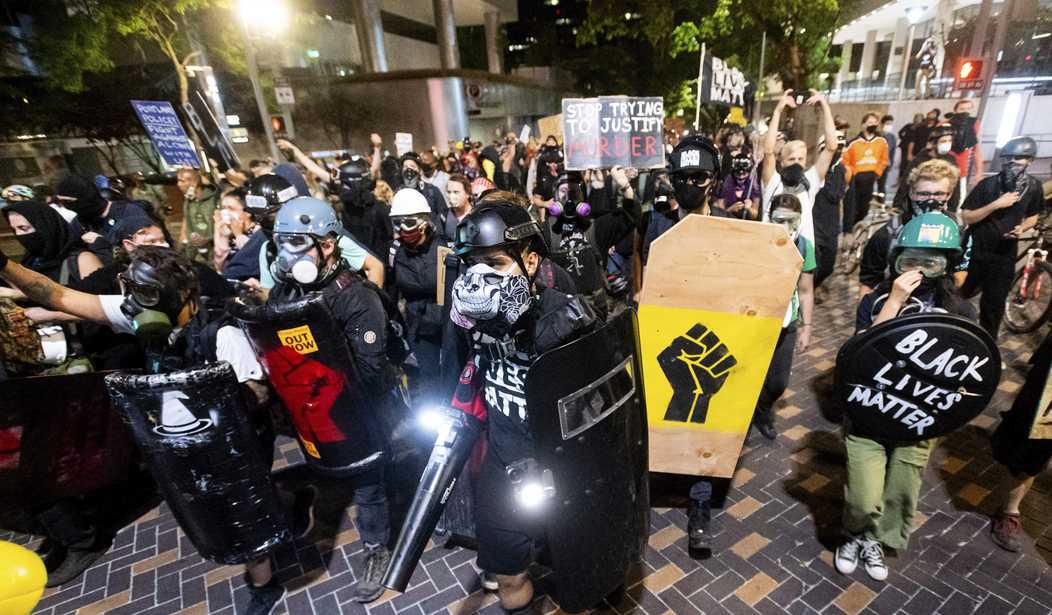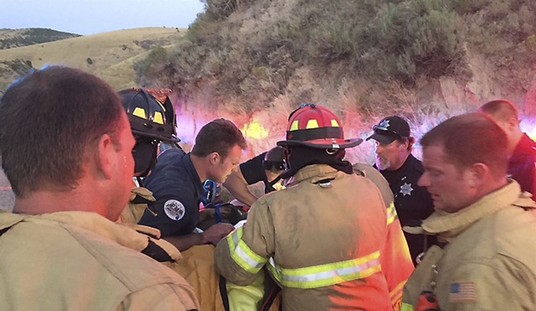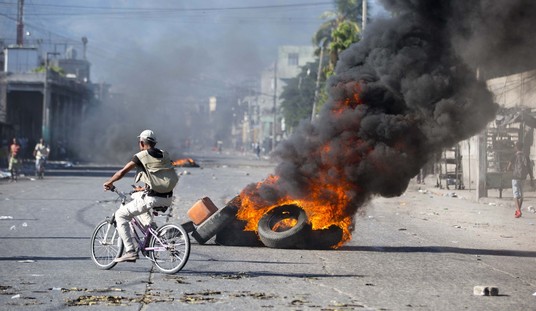The FBI’s annual crime report is scheduled to be officially released Monday but the NY Times noticed that the data has already appeared on the FBI website. What the data shows is that last year was the sharpest one-year increase in the murder rate since the government started tracking the data in 1960:
The United States in 2020 experienced the biggest rise in murder since the start of national record-keeping in 1960, according to data gathered by the F.B.I. for its annual report on crime.
The Uniform Crime Report will stand as the official word on an unusually grim year, detailing a rise in murder of around 29 percent. The previous largest one-year change was a 12.7 percent increase in 1968.
Here’s a chart that shows the increase last year compared to the previous 59 years.

The real number of additional murders last year was about 5,000 above what we saw in 2019. Still, the total number of murders isn’t as high as it was in the early 1990s. In fact, crime overall mostly was down last year. It’s primarily murder and shootings that spiked.
The big question is why this happened last year. I’ve been critical in the past of the Times’ coverage of this issue. The paper seemed much more focused on blaming the murder spike on the pandemic than it was in looking at other factors. This piece is an improvement in that it at least includes the death of George Floyd and the protests that followed as one of three possible factors.
The reasons for the rise may never be fully sorted out, but analysts have pointed to many possible contributing factors, including various pandemic stresses; increased distrust between the police and the public after the murder of George Floyd, including a pullback by the police in response to criticism; and increased firearm carrying…
Murders were already elevated in the first few months of 2020, then increased significantly in June and stayed high through the remainder of the year.
It’s something but I still think the Times is downplaying the obvious a bit. Here’s the chart of the monthly murder rate. What you’ll see is that the first month where the murder rate started to spike above the average in previous years was May. Why in May? Because George Floyd was killed on May 25th and by the next day the video was going viral. The final weekend of May became a weekend of violent protests which pushed the monthly numbers out of orbit. And from there the murder rate continued to go up as sometimes violent anti-police protests were taking place around the country:

Why would the death of George Floyd be connected with a wave of violence? I think the answer to that has to do with the nature of the protests, which were explicitly hostile to police. Police pulled back as protesters created autonomous zones in some cities. It was basically the Ferguson Effect all on a national scale. As police pulled back, criminals had less fear of consequences and also, some people felt more inclined to seek street justice rather than call the police when a disagreement arose. That’s the “increased distrust” mentioned above. The protests last year didn’t have to actually defund police departments in order to have a significant impact on the behavior of both cops and criminals.
As for the other two explanations being offered, blaming this on the pandemic doesn’t make sense for three reasons. First, because of the timing of the spike in May when lockdowns started a month earlier. Second, because other types of crime dropped last year. And third, because other countries which had similar lockdowns and pandemic related stresses didn’t see similar spikes in murder.
That said, I do think there is a different pandemic-related argument that makes some sense as a factor in the spike in murders. The death of George Floyd seems to have kicked off a wave of violence but that wave might have been mitigated by existing anti-violence programs if the pandemic hadn’t shut them all down months earlier. In other words, I don’t think the pandemic caused the violence but it may have been a precondition that made things worse, i.e. the equivalent of dry tinder for a wildfire.
As for the claim that increased firearm sales were responsible for increased crime, I’ve hashed through some of those arguments before. It’s certainly noteworthy that gun sales were up last year but I suspect that’s because a lot of people could see the chaos unfolding on their televisions and the rise in crime connected to it and wanted to protect themselves, not do harm to others. At least one study found no correlation between gun sales and shootings, at least up through last June. It’s particularly significant that the authors of that study had previously reported there was a connection but revised their conclusions in light of additional data.
The really bad news is that murder rates have continued to go up in 2021, though not nearly as fast as last year:
The evidence from big cities suggests murder is still up in 2021 relative to 2020, although the increase is not nearly as big. My collection of data from 87 cities with publicly available year-to-date data shows murder up by 9.9 percent relative to comparable points in 2020.
Some cities like Portland, Ore., and Las Vegas are seeing big increases relative to last year; some big cities like Chicago and New York are seeing flat numbers after sizable increases in 2020; and some places like St. Louis (which had the nation’s highest murder rate in 2020) are seeing sizable declines.
I don’t think it’s a coincidence that Portland had some of the most consistent and most violent protests last year and also lost a lot of officers to retirement and resignations. Portland was a worst case scenario for the connection between anti-police protests and increased violence and the numbers seem to reflect that.
Update: Above I included a graph created by the Times which shows the % change in the murder rate since 1960. The author has since removed that graph and replaced it with one showing the annual change in the actual number of murders. Last year really was unprecedented.
We switched the graphic showing % change in murder by year to show absolute change. I certainly get the critique that % change in this case isn't the best option for communicating data. https://t.co/iHTahRW3KV pic.twitter.com/SIsW7iy9VP
— Jeff Asher (@Crimealytics) September 23, 2021








Join the conversation as a VIP Member